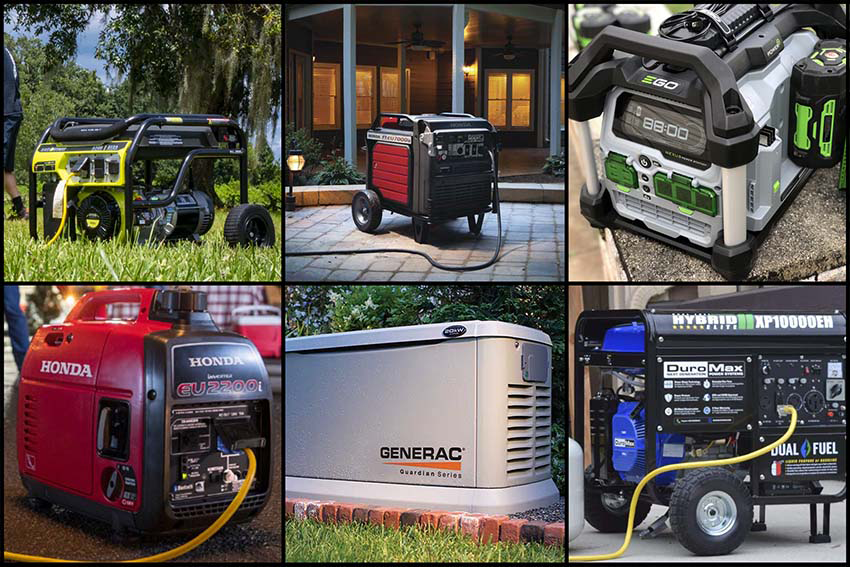
Portable generators are invaluable power sources during emergencies, outdoor activities, or when working in remote locations. However, to ensure their safe and effective operation, it’s crucial to understand how to exhaust portable generators properly. This in-depth guide will explore exhaust management techniques, including using exhaust kits, extensions, and silencers while prioritizing safety and efficiency. For more insights into specific exhaust control strategies and their importance, you can also refer to our previous article on Generator Exhaust Control Strategies for
The Significance of Proper Exhaust Management
Before delving into the specifics of exhaust management, it’s essential to grasp why it matters. The exhaust gases generated by portable generators, notably carbon monoxide (CO), can pose severe health risks when inhaled in concentrated amounts. It’s critical to take exhaust control seriously to protect your health and the health of those around you.
How to Exhaust a Generator Safely and Effectively
Location: Choosing the right location for your portable generator is the foundation of safe exhaust management:
Ventilated Outdoor Area: Place your generator in a well-ventilated outdoor space to allow exhaust gases to dissipate rapidly.
Distance from Structures: Ensure the generator is positioned well away from your home’s windows, doors, vents or other structures to prevent exhaust from entering living spaces.
Stable Surface: Always place the generator on a regular, level surface to prevent accidental tipping.
Exhaust Direction: Appropriately directing exhaust gases is crucial:
Point Away from Occupied Areas: Position the generator so that the exhaust pipe points away from places where people reside, work, or camp.
Emissions Away: Ensure that exhaust emissions are consistently directed away from individuals and living spaces to minimize exposure to harmful gases.
Ventilation and Airflow: Maintaining proper airflow around the generator is essential:
Adequate Ventilation: Ensure that there is sufficient airflow around the generator. Only enclose it in a confined space or areas with good ventilation.
Open Spaces: Use your generator in open areas to facilitate better airflow and reduce the risk of exhaust accumulation.
Carbon Monoxide Detector: Installing a carbon monoxide (CO) detector is a safety essential:
Early Warning: A battery-powered CO detector inside your home or camping area will provide an early warning if dangerous CO levels are detected.
Regular Testing: Test the detector regularly to ensure it functions correctly and replace batteries as needed.
Using Generator Exhaust Kits
Generator’s exhaust kits are valuable tools for safely and efficiently managing exhaust gases. These kits typically consist of flexible pipes, fittings, and clamps for straightforward installation.
Generator Exhaust Through the Wall
Installation: You can install an exhaust kit to direct generator emissions outside through a wall or window.
Secure Attachment: Ensure the kit is securely attached to the generator’s exhaust outlet and the exterior wall.
Seal Gaps: Seal gaps around the exhaust pipe to prevent exhaust gases from infiltrating your living space.
Diesel Generator Exhaust Pipe Extension
Specific Requirements: Diesel generators often have specific exhaust requirements.
Use Extension Kits: Utilize suitable exhaust extension kits designed for diesel generators to meet these requirements safely.
Silicone Exhaust Hose for Generator
Durability and Resistance: Some exhaust kits include silicone hoses known for their durability and resistance to high temperatures.
Proper Connection: Ensure the silicone hose is correctly connected to the generator’s exhaust port and the outdoor outlet for effective exhaust management.
Generator Exhaust Silencers
In addition to managing harmful gases, excessive noise from generators can be a concern, particularly in residential areas or during quiet outdoor activities. Some exhaust kits include silencers or mufflers designed to reduce noise levels:
Noise Reduction: Installing a generator exhaust silencer can significantly decrease the noise generated during operation.
Enhanced Comfort: Not only does this keep the generator quieter, but it also minimizes disturbances to your surroundings, improving overall comfort.
Extension Kits for Specific Generator Brands
Many reputable generator brands offer extension kits tailored to their respective models. These extension kits are designed to fit specific generator models precisely and often include all the necessary components for a secure and efficient exhaust system. Here are some examples:
Wen Generator Exhaust Extension
Honda Generator Exhaust Extension Kits
Westinghouse Generator Exhaust Extension
DuroMax Generator Exhaust Extension
Champion Generator Exhaust Extension
Conclusion
In conclusion, effectively managing the exhaust of portable generators is paramount to ensure the safety and well-being of those around you. Whether you’re relying on a generator for emergency power or enjoying outdoor adventures, following the comprehensive guidelines provided here and considering the use of exhaust kits, extensions, and silencers, as discussed in our previous article on Generator Exhaust Control Strategies for a Sustainable Future, will contribute to a safer and more enjoyable experience. It’s essential to remember that safety should always be a top priority when operating portable generators, and taking precautions with exhaust management is a crucial step toward achieving that goal.
Frequently Asked Questions
Proper exhaust management is crucial to prevent the buildup of harmful gases, such as carbon monoxide (CO), which can be lethal when inhaled in high concentrations. It also helps minimize the environmental impact of generator emissions and reduces noise levels for a safer and more comfortable experience.
Place your generator in a well-ventilated outdoor area, away from windows, doors, and vents of your home or other structures. Ensure it’s on a stable, level surface to prevent tipping. Always position the generator so the exhaust pipe points away from people and living spaces.
A CO detector is a critical safety device. It alerts you to dangerous carbon monoxide levels near your generator. Install a battery-powered CO detector in your home or camping area, and regularly test it to ensure it functions correctly.
Generator exhaust kits provide flexible pipes, fittings, and clamps to help you safely direct exhaust emissions away from occupied areas. They are handy for exhaust management in enclosed spaces or when you must route exhaust gases outside through a wall or window.
Numerous generator manufacturers provide extension kits designed for their particular models. Wen, Honda, Westinghouse, DuroMax, and Champion are a few examples. These extension kits guarantee a safe and effective exhaust system, assisting you in efficiently controlling pollutants.
Exhaust silencers or mufflers reduce the noise generated during generator operation, contributing to a quieter and more comfortable environment. They are particularly beneficial when using generators in residential areas or during quiet outdoor activities.
Absolutely. Whether relying on a generator for emergency power during outages or enjoying recreational activities outdoors, following exhaust management guidelines is essential for safety and environmental responsibility.
Yes, for a deeper dive into generator exhaust control strategies and their role in creating a sustainable future, we recommend referring to our previous article on Generator Exhaust Control Strategies for a Sustainable Future.





